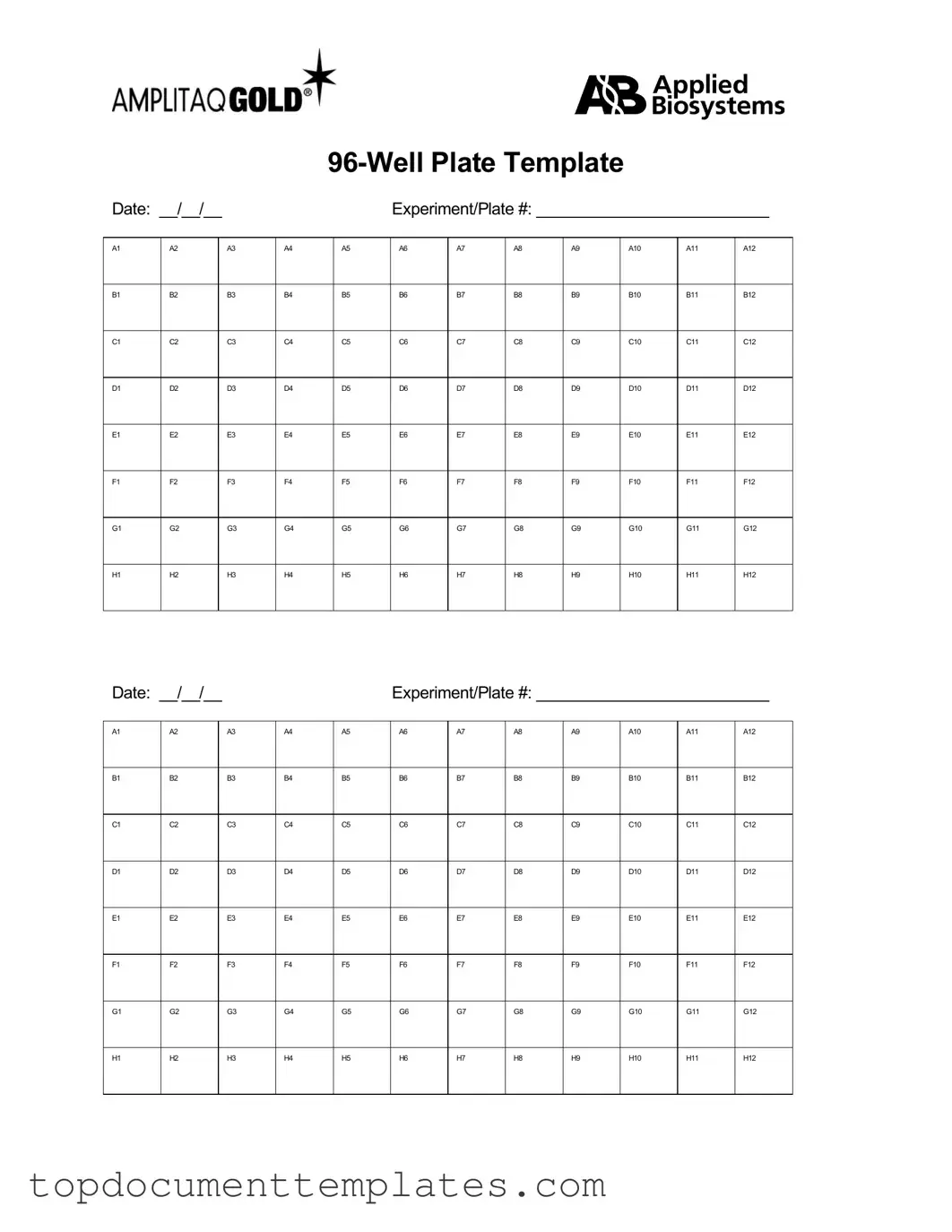The 96 Well form is a crucial tool utilized in various fields, particularly in laboratory settings, for organizing and documenting experimental data. This form typically consists of a grid layout that accommodates 96 wells, allowing researchers to efficiently track samples, reagents, and experimental conditions. Each well can represent a unique sample or condition, facilitating streamlined data collection and analysis. The design of the form promotes clarity, enabling users to quickly identify and reference specific wells. Additionally, the 96 Well form often includes sections for recording essential information such as sample IDs, concentrations, and experimental notes. By providing a structured approach to data management, this form enhances the accuracy and reproducibility of scientific experiments, making it an indispensable resource for researchers and lab technicians alike.
